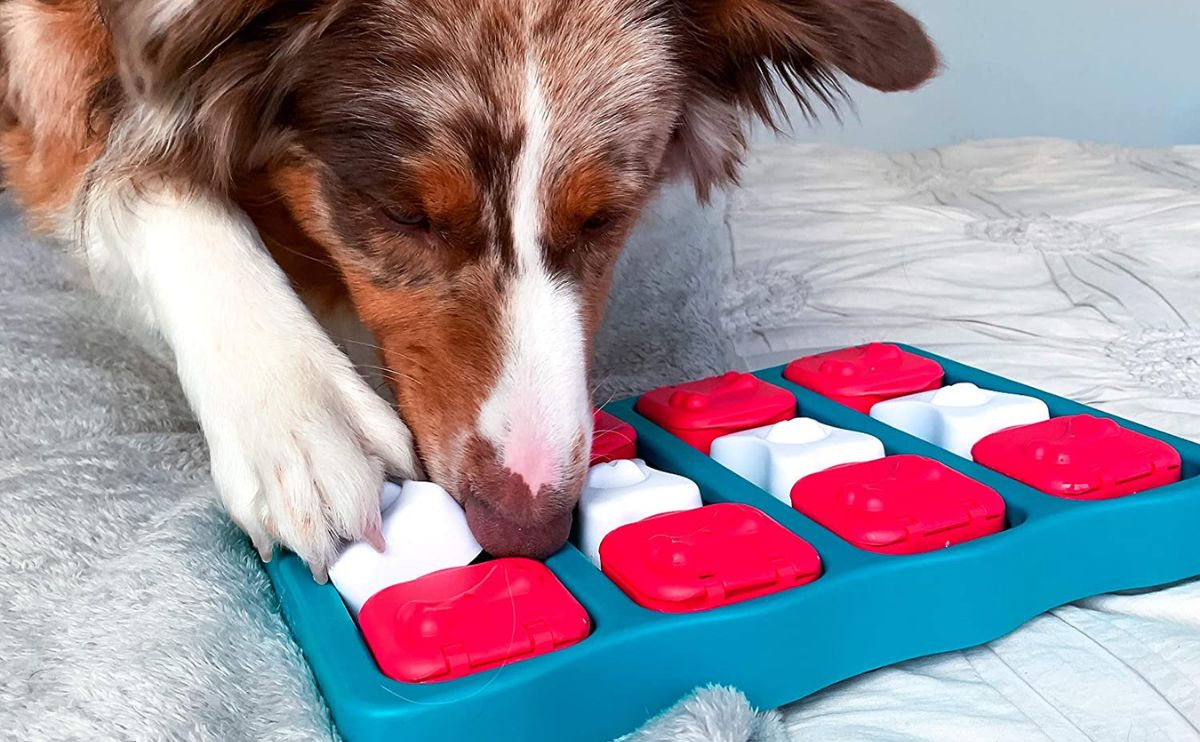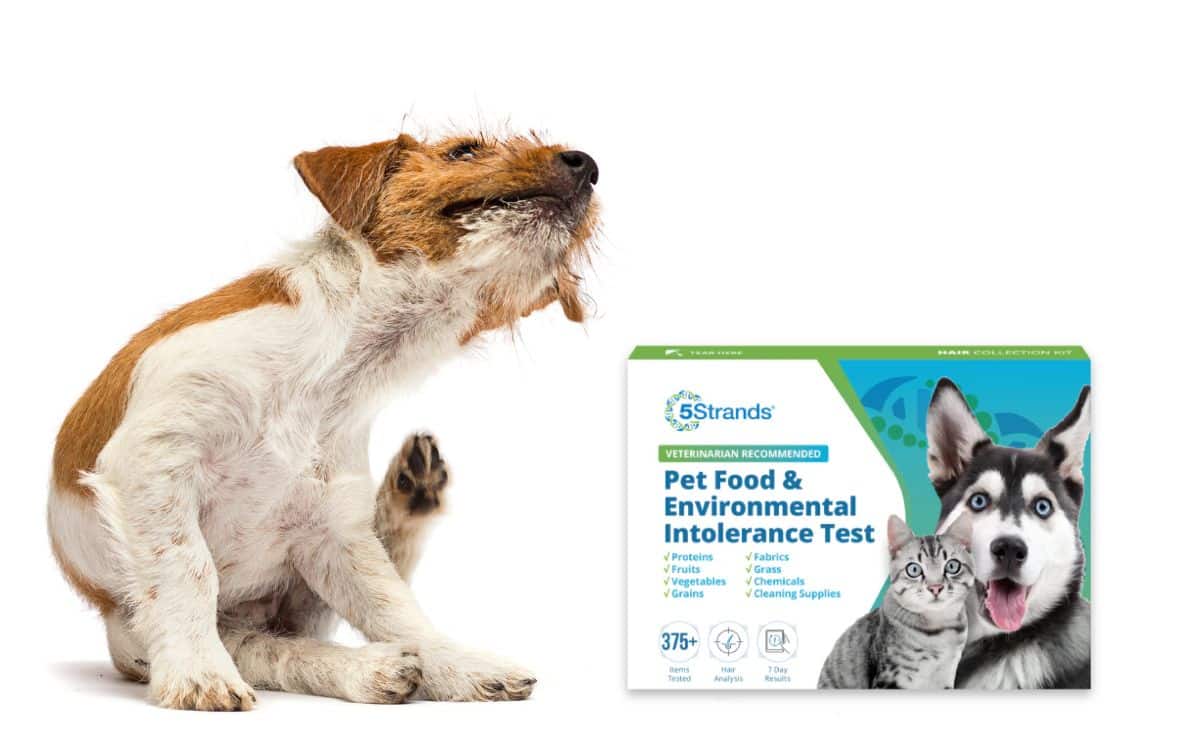Is Benadryl Safe For Dogs? Everything You Need To Know Before You Dose!
When you purchase through links on our site, we may earn a commission. Here’s how it works.
Your pup’s itching nonstop, and you’re wondering, “Can I give my dog Benadryl?” You’re not alone if you’ve ever googled that question in a mild panic. Many pet parents reach for this common over-the-counter antihistamine as a quick fix for allergies, anxiety, or mysterious bumps that show up out of nowhere.
Table of Contents
But here’s the thing: just because Benadryl is safe for humans doesn’t mean the same rules apply to dogs. Giving the wrong dose or using it for the wrong condition can do more harm than good. In this guide, I break down everything you need to know before you grab that pink pill and also share my personal experience using it for both my dogs. From the correct dosage based on your dog’s weight to possible side effects and risk factors, this is your one-stop cheat sheet for using Benadryl safely and smartly.
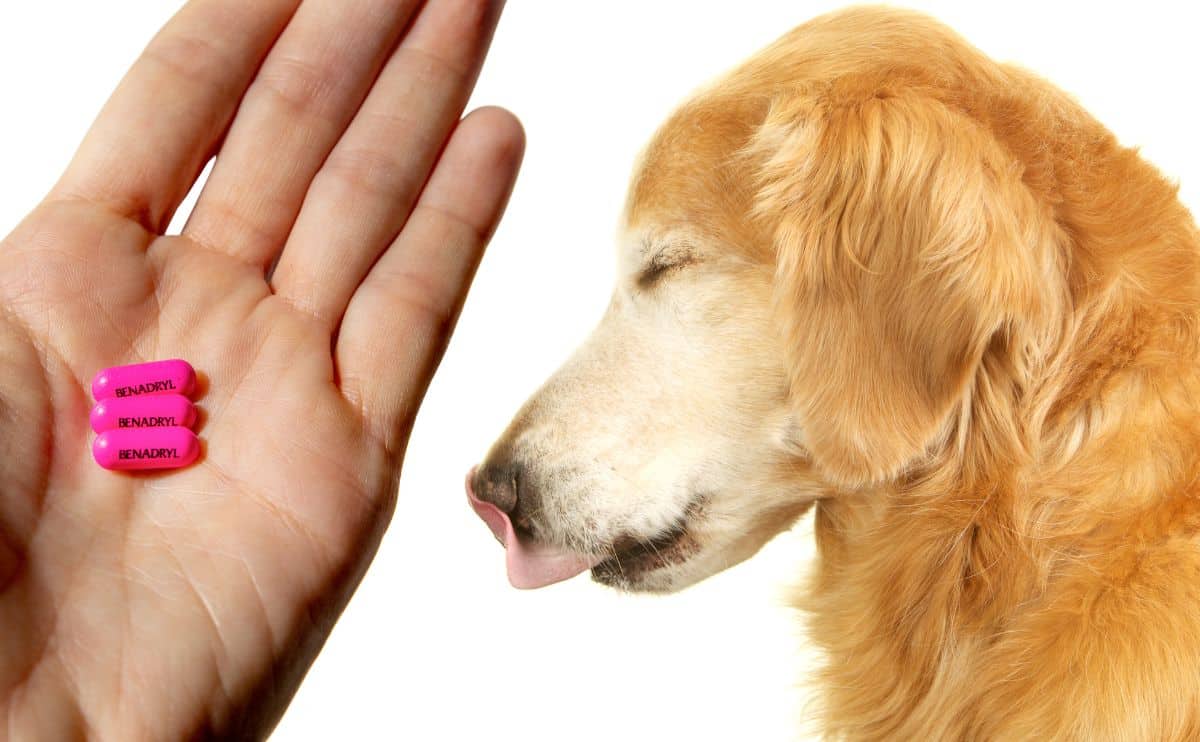
Worried About Vet Costs Adding Up?
Pet insurance can help cover unexpected allergic reactions, emergency visits, and vet-prescribed medications. Learn more in our guide to the best pet insurance for dogs. Grab a free quote using the form below to see what it could cost you.
What Is Benadryl & How Does It Work In Dogs?
Benadryl, the brand name for diphenhydramine, is a first-generation antihistamine commonly found in medicine cabinets across North America. While most people use it for seasonal allergies, bug bites, or even sleep issues, many pet owners don’t realize that vets frequently recommend it for dogs.
Important: Diphenhydramine hydrochloride is the active ingredient in “American Benadryl” (found in the U.S., Canada, Singapore, Taiwan, Italy, and Hong Kong). However, in the U.K. and Denmark, the active ingredients are acrivastine in Benadryl Allergy Relief and cetirizine in Benadryl Once a Day. Limited information exists on acrivastine and cetirizine use in dogs. So if you’re in Europe, ensure the active ingredient is diphenhydramine, the only form of Benadryl that’s considered safe for dogs.
What Benadryl Does
During an allergic reaction, our bodies release two natural substances called histamines and acetylcholine. This can cause itchiness, hives, swelling, redness, watery eyes, and a list of other symptoms. The symptoms will depend on how severe the reaction is. An antihistamine, like Benadryl, works by blocking these symptom-causing substances. In dogs, this can help reduce:
- Itchy skin and hives
- Swelling from insect bites or stings
- Minor reactions to vaccines
- Sneezing and runny eyes due to environmental allergies
Is Benadryl Made For Dogs?
Not exactly. Benadryl is not FDA-approved for veterinary use, but it’s widely used by vets “off-label” because it’s generally considered safe when used properly. That said, not every dog is a good candidate for it, and dosage matters more than you might think.
How Benadryl Works In Dogs (vs. Humans)
Unlike newer antihistamines, Benadryl crosses the blood-brain barrier, which is why it often makes both people and dogs feel drowsy or lethargic. That’s not always a bad thing. It’s why some vets use it to help calm anxious dogs during car rides or fireworks. However, the sedative effect also means it needs to be used with extra care, especially in senior dogs or those with health conditions.
Dogs have the same bodily response when they’re exposed to an allergen, so Benadryl works in the same way to bring them relief from allergy symptoms. Because it’s so well tolerated and has a wide safety margin, it’s one of the only over-the-counter medications veterinarians approve for routine at-home use.
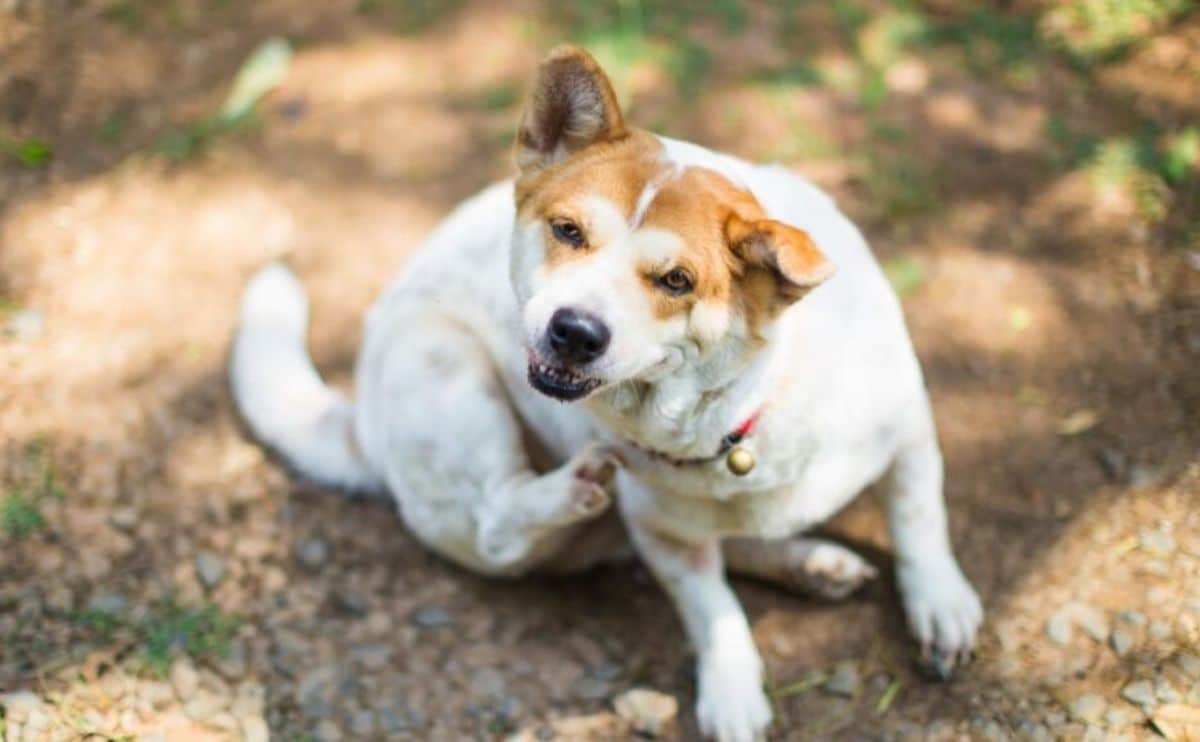
When To Use Benadryl In Dogs: Symptoms & Conditions It Can Help
So, is Benadryl safe for dogs? When does it make sense to reach for Benadryl instead of rushing to the vet or trying another remedy? Benadryl can be a legit lifesaver in certain situations, but only if you’re clear on what it actually helps with.
With its benefits and few adverse side effects, it’s added to several different treatment plans. Here’s a breakdown of the most common (and safe) reasons vets recommend Benadryl for dogs:
1. Allergies & Environmental Triggers
Just like us, our fur babies can have allergic reactions to new irritants in their environment. This can mean an insect bite or a new shampoo. An allergic reaction in a dog can present as a swollen muzzle, red skin, hives, or even vomiting. While you should contact your vet first, Benadryl is almost always used to respond to a reaction.
My dog, Lily, got a hornet sting on her left back leg while on a walk. It swelled up quickly. When we got home, we immediately gave her Benadryl and monitored her symptoms closely for any changes. Additionally, we applied ice for 10 minutes once an hour. While she was still limping a few hours later, this treatment combo helped reduce some of the swelling and discomfort. Thankfully, within two days, Lily was feeling significantly better.
2. Reaction To Vaccines
Some pets can have reactions to the vaccines that their bodies need to fight off dangerous viruses. In this case, Benadryl is often given as pre-medication to neutralize the response before it even starts. If your dog has had reactions to their vaccines in the past, talk to your vet about offering Benadryl beforehand.
My other dog, Barley, is extremely sensitive to vaccines. So, before an appointment, the vet always asks us to pre-medicate him with a Benadryl 30-60 minutes before so that his reaction to the shots is less severe. This has made the whole experience, especially the aftereffects, go much more smoothly.
If breathing becomes labored or your dog collapses, skip the Benadryl and head to the ER immediately. This is beyond over-the-counter help.
3. Chronic Skin Conditions
Dogs with skin allergies itch a lot. Whether it flares up at a certain time of year or if it seems to be constant, Benadryl can help take the edge off. After ruling out any other causes for itchy skin with your vet, using Benadryl can bring great benefits to your itchy companion. In these cases, combine Benadryl with vet-approved shampoos or allergy supplements for better results.
4. Mild Anxiety & Motion Sickness
If you’ve ever taken Benadryl, you probably remember that sudden urge to take a nap. Diphenhydramine can cause drowsiness in pups as well, so it’s often recommended to relax dogs who suffer from anxiety while traveling, during fireworks, etc. It may also help with motion sickness.

Side Effects Of Benadryl In Dogs: What To Watch For
Benadryl has very few negative side effects, making it such a great option for routine use. However, just like in humans, Benadryl doesn’t come without potential side effects in dogs. While it’s usually well tolerated, especially when dosed correctly, some dogs may react poorly. So, it’s important to know the red flags.
Common & Usually Mild Side Effects
These are the typical “meh” reactions you might notice after a proper dose:
- Drowsiness or grogginess (Benadryl’s calling card)
- Dry mouth (may pant more than usual)
- Slight decrease in appetite
- Mild digestive upset (gas or soft stool)
- Unsteady gait
What to do: Let your pup rest. These effects are usually temporary and not cause for alarm.
Moderate Side Effects That Warrant Monitoring
Some dogs can experience slightly more noticeable changes, including:
- Hyperactivity (paradoxical reaction, more common in puppies)
- Agitation or nervousness
- Rapid breathing
- Elevated heart rate
Heads-up: If you notice these symptoms, it’s time to call your vet for advice.
Serious Side Effects That Require Immediate Vet Care
Benadryl isn’t one-size-fits-all, and a wrong dose, drug interaction, or pre-existing condition can trigger a dangerous response:
- Vomiting that won’t stop
- Diarrhea with blood
- Seizures or muscle tremors
- Collapse or extreme lethargy
- Swollen face, lips, or tongue (sign of severe allergic reaction)
- Breathing problems
Emergency tip: If your dog shows any of the above signs, don’t wait. Head to the emergency vet immediately. These could indicate a Benadryl overdose or allergic response to the medication itself.
Like any other medication, there is the potential for a negative response. Following the recommended dosage for this medication and discussing its use with your vet will help prevent these side effects.
Risk Factors: When Benadryl Is NOT Safe
Wondering if Benadryl is bad for dogs? Benadryl can make some conditions worse, so you should use caution if your pup suffers from any of the following health issues. Be sure to discuss Benadryl use with your veterinarian in these cases, and if adverse interactions with any other medication your furry friend is taking are possible.
Pregnant Or Nursing
The safety of Benadryl during pregnancy or nursing hasn’t been firmly established. Always get veterinary approval first. It’s not worth the risk without medical guidance.
Senior Or Neurologically Sensitive Breeds
Senior dogs often have slower metabolism and reduced organ function, meaning even a “safe” dose could hit harder than expected. They’re also more prone to side effects like sedation, confusion, or imbalance (which increases fall risk). Breeds prone to seizures (like Boxers or Collies) may experience more potent side effects or heightened sensitivity to sedatives. It can worsen cognitive issues or trigger neurological flare-ups.
Respiratory Conditions
Brachycephalic breeds like Bulldogs, Pugs, and Boston Terriers already have compromised breathing. Benadryl’s sedative effect can slow respiration further, making things worse, not better.
Glaucoma & Other Eye Conditions
Benadryl can increase intraocular pressure, which is dangerous for dogs with glaucoma or a history of eye issues. Giving it to these dogs without veterinary oversight could worsen their condition or lead to pain and vision loss.
Heart Disease & High Blood Pressure
Benadryl may increase heart rate slightly, which is not ideal for dogs with cardiovascular issues. Talk to your vet first if your dog has been diagnosed with murmurs, arrhythmia, or high blood pressure.
Hyperthyroidism
Benadryl may stimulate the cardiovascular system, which is risky for dogs with hyperthyroidism. This condition already causes increased heart rate, blood pressure, and metabolism, and Benadryl can worsen those effects.
Respiratory Conditions
Especially chronic obstructive pulmonary disease (COPD), collapsing trachea, and brachycephalic airway syndrome. Benadryl can cause sedation and respiratory depression. In these dogs, even mild drowsiness could compromise breathing, especially when lying down or sleeping.
Suspected Or Diagnosed Intestinal Obstruction
Benadryl has anticholinergic effects, meaning it can slow down the digestive system. For dogs with bloating, constipation, or suspected bowel obstruction, this can worsen the blockage or delay treatment.
Other Medications
If your dog is using sedatives, anti-anxiety meds, steroids, or MAO inhibitors (often found in antidepressants), you must discuss this with your vet. These combinations can over-sedate or dangerously affect your dog’s blood pressure, liver, or kidneys.
How Much Benadryl Can I Give My Dog?
Once you have discussed the use of Benadryl with your vet, the dosing guide for Benadryl is quite simple. Most vet techs have historically recommended a standard dose of roughly 1mg/pound for our patients with mild allergies and itchy skin. The standard Benadryl you will find in stores is 25mg/tablet for adult-sized Benadryl. You may also find 12.5mg/5 ml for Children’s Liquid Benadryl.
Benadryl Dosage Chart For Dogs
To make your life easier, I will add a guide below for a quick breakdown of dosing for your furry friend. But we have a detailed guide on the recommended dosage for Benadryl, so be sure to visit this for more info.
| Dog’s Weight | Benadryl Dosage |
|---|---|
| 5 lbs | 5 mg – 2 ml Children’s Benadryl every 8-12 hours |
| 10 lbs | 10 mg – 4 ml Children’s Benadryl every 8-12 hours |
| 20 lbs | 20 mg – 3/4 tablet every 8-12 hours |
| 30 lbs | 30mg- 1 tablet every 8-12 hours |
| 40 lbs | 40mg- 1.5 tablets every 8-12 hours |
| 50 lbs | 50mg- 2 tablets every 8-12 hours |
| 60 lbs | 60mg- 2.5 tablets every 8-12 hours |
| 70 lbs | 70mg- 2.5 tablets every 8-12 hours |
| 80 lbs | 80mg- 3 tablets every 8-12 hours |
| 90 lbs | 90-100mg- 3.5-4 tablets every 8-12 hours |
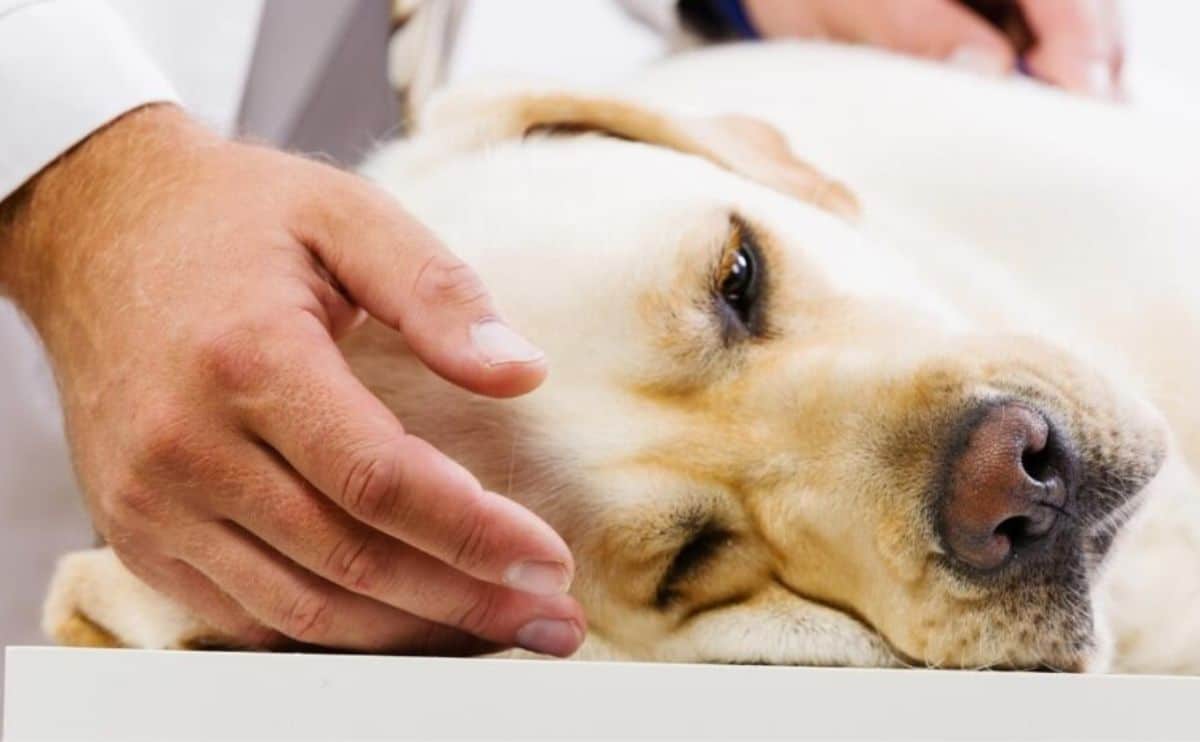
Signs Of A Benadryl Overdose & Emergency Response Steps
While Benadryl has a wide safety range, it’s still possible to overdose on Benadryl. Sticking to the recommended dosage of this drug is essential for your pup’s health and helps to ensure the full benefits that Benadryl can bring.
Symptoms Of Benadryl Overdose In Dogs
If you think your dog is experiencing a Benadryl overdose, please contact your veterinarian ASAP for further treatment. Knowing the signs of toxicity can literally save your dog’s life. Symptoms of Benadryl overdose include:
- Dilated pupils
- Agitation
- Constipation
- Extreme drowsiness or unresponsiveness
- Hyperactivity or nervous twitching (paradoxical reactions)
- Rapid or irregular heartbeat
- Muscle tremors or seizures
- Difficulty breathing
- Dry mouth and urinary retention
- Vomiting or diarrhea
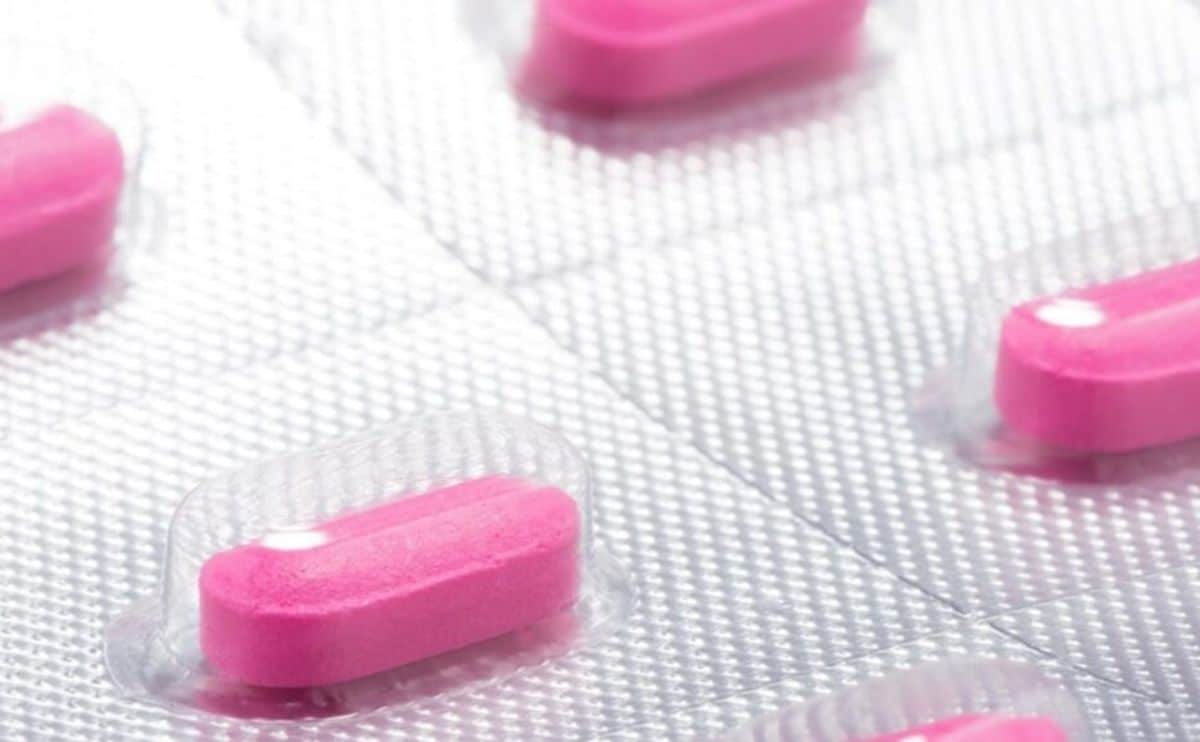
What To Do If You Suspect An Overdose
- Stay calm but act quickly.
- Call your vet immediately, or contact a pet poison control center:
- ASPCA Poison Control: (888) 426-4435
- Pet Poison Helpline: (855) 764-7661
- Don’t induce vomiting unless your vet specifically tells you to.
- Have the packaging ready to report how much your dog ingested, and in what form (tablet, capsule, liquid).
Can Dogs Build A Tolerance To Benadryl?
It’s a fair question: If you give your dog Benadryl regularly, will it eventually stop working? The answer is yes. Tolerance can develop, especially when it’s used too frequently or long-term.
How Tolerance Works In Dogs
Benadryl (diphenhydramine) is a first-generation antihistamine. Like many drugs that affect the nervous system, its effectiveness can decrease over time as the body adapts.
- The sedative effect is often the first to weaken. A dog that was super sleepy after the first few doses may become noticeably less drowsy after a week or two.
- The antihistamine effect can also become less pronounced, especially if the underlying allergy isn’t well-controlled.
This is the same reason humans are warned not to rely on Benadryl as a long-term sleep aid.
Signs Your Dog May Be Developing Tolerance
- They’re scratching again even after a full dose
- They’re no longer sleepy after taking it
- You’re needing to increase the dose just to see the same results
If you’re tempted to give “just a little more,” stop. That’s a red flag to switch meds, not to push dosage limits.
How To Avoid Or Reset Tolerance
- Limit use to short-term relief only (2–3 days max unless instructed by your vet)
- Rotate with other antihistamines like Zyrtec or Claritin under guidance
- Focus on the underlying causes, don’t rely on Benadryl as a band-aid
Benadryl is best for acute relief, not maintenance. If it stops working, don’t double up. You need to rethink your allergy plan.
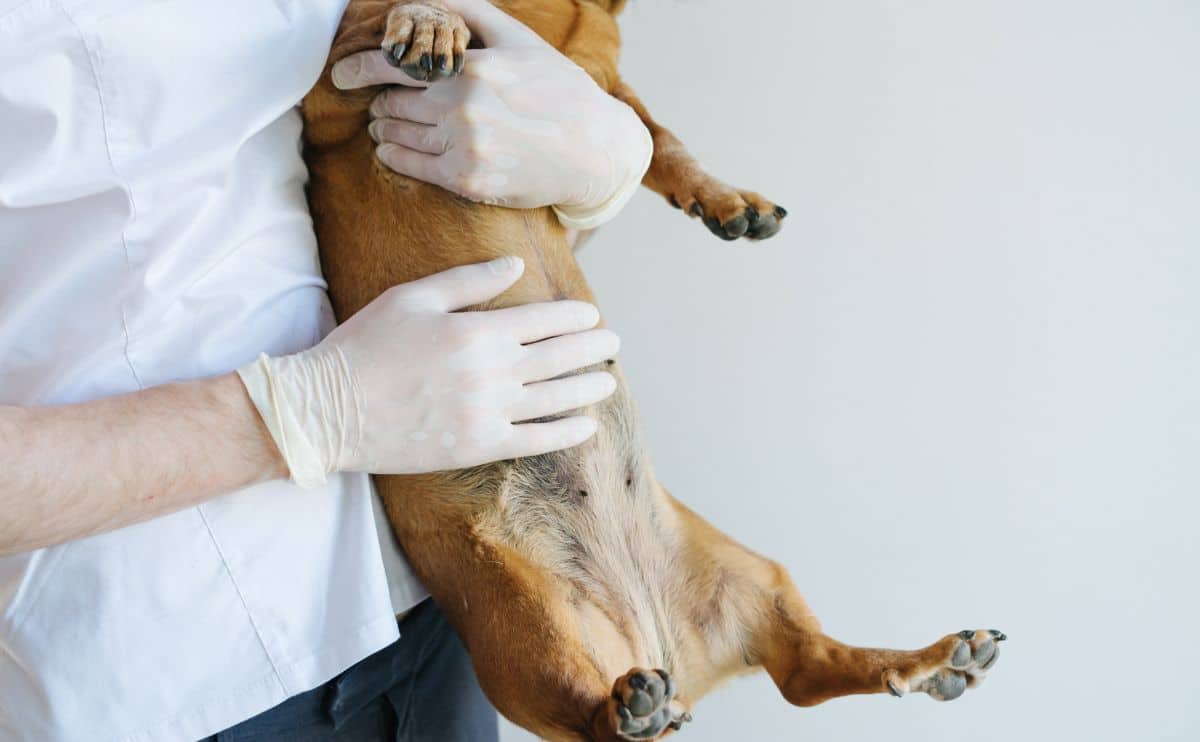
When Should I Contact My Vet?
It’s important to remember that while Benadryl can bring our doggo incredible relief, it’s not a “cure” for any kind of medical condition. Benadryl is simply made to target any kind of allergic response and alleviate the symptoms associated with that response. If your pup is experiencing a chronic problem or is no longer finding relief with Benadryl, then it is time to talk to your veterinarian about the next set of options.
Here are a few tips to help you know when it’s time to contact your vet:
They Won’t Stop Itching
If you use Benadryl daily but your beloved companion will not stop itching, it’s time to visit your vet. Several skin conditions can cause itchiness that will not resolve with Benadryl, so getting a professional opinion is important.
Their Eyes Are “Goopy”
Some pet owners are quick to jump to “allergies” any time their pet experiences discharge and goopiness in the eyes. Discharge from your dog’s eye is abnormal and should always be checked by a professional. This is especially important with the use of Benadryl, as glaucoma can be worsened with the routine use of antihistamines.
Hot Spots, Scabs & Open Wounds
Sometimes, dogs scratch and bite themselves to the point of injury, which can lead to open wounds and hot spots. If your pet is experiencing wounds and severe skin irritation, a trip to the vet is crucial. You’ll need to pinpoint the cause of their discomfort and resolve any skin infection.
Sneezing, Wheezing & Coughing
While sneezing and coughing can be associated with allergies, if you hear your pet doing either, it’s safest to visit your vet. These same symptoms can be associated with respiratory infections and other contagious illnesses, so it’s important to rule these illnesses out. The progression of these conditions without medical intervention can be serious.
Diagnosed Conditions
If your dog has any diagnosed condition, it’s best to discuss the use of Benadryl with your vet first to rule out any interactions with the condition. You want to make sure it won’t conflict with other medications that your pet is taking.
Reaction To Medication
We discussed how reactions to Benadryl are rare, but they can happen. If your pet experiences any diarrhea, vomiting, change in breathing, rapid heartbeat, or any other concerning symptoms, stop its use and contact your vet ASAP.
Benadryl Alternatives For Skin Allergies
The common use of Benadryl in dogs is for skin allergies and itchiness. Luckily, there are so many options these days with quality shampoos and prescription medications. Here’s a breakdown of the top vet-approved, natural, and prescription alternatives for skin-related issues:
Medicated Shampoos & Topical Sprays
When our furry friends have itchy and dry skin, a shampoo that can combat these symptoms can bring them incredible relief. Look for ingredients such as oatmeal, aloe, lavender, chamomile, vitamin E, or allantoin. Also, look for options containing chlorhexidine (antibacterial) or ketoconazole (antifungal) if that’s what your pup needs. Weekly or bi-weekly baths can help to hydrate their skin and relieve itchiness.
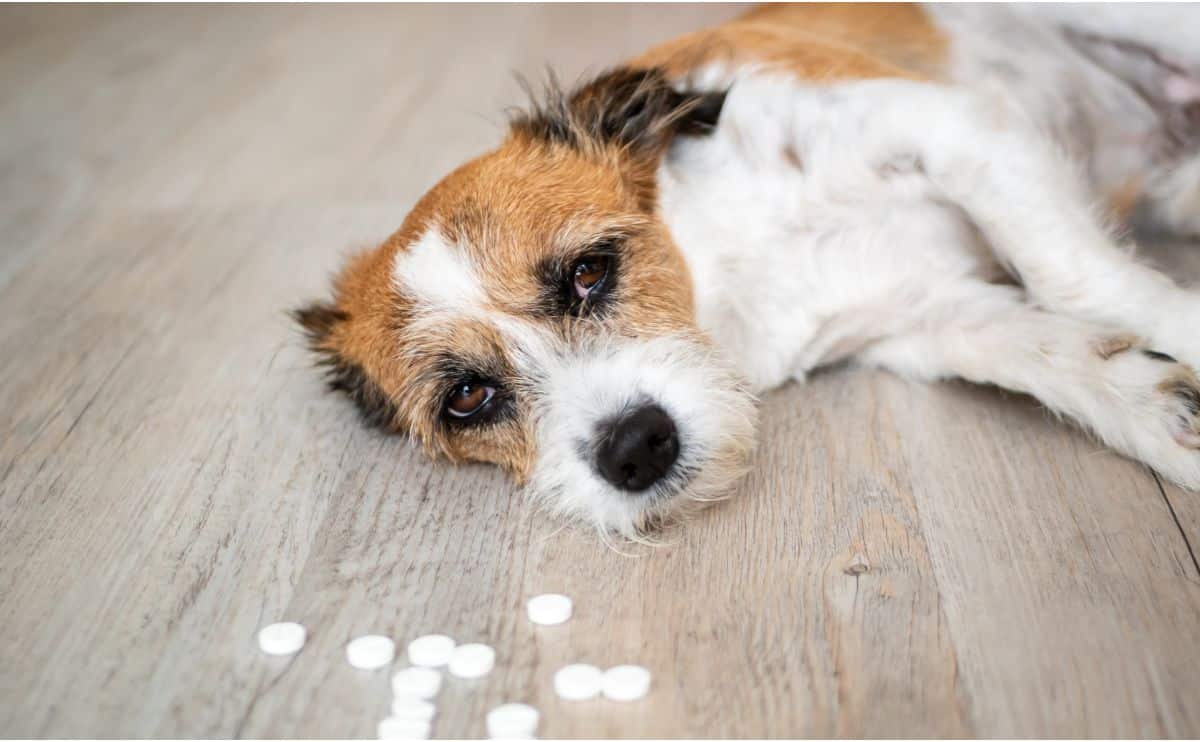
Prescription Medications
If Benadryl just doesn’t do the trick, your pet may need something a bit stronger to relieve their symptoms. There are now several different options for itchy pups in the form of daily medications and monthly injections. Talk to your vet about what option would be favorable to your pup.
Supplements
Many pet owners find relief for their dogs by adding fish oil and other dog allergy supplements to their diet. By helping to nourish dry skin, this can relieve itchiness. Probiotics can also help balance gut health, which can influence immune response. Always run supplements by your vet to avoid interactions.
Environmental Allergy Control
You can’t fix what you don’t control. If your dog has seasonal or environmental allergies:
- Wipe paws and fur after walks
- Vacuum often
- Use HEPA air filters
- Wash bedding regularly
Sometimes, simple daily habits go further than any pill or spray.
How Can I Figure Out What’s Causing My Dog’s Allergies?
Benadryl can stop the itching, and shampoos can soothe the skin. But if you don’t know what’s causing the allergy, it’s like slapping a Band-Aid on a leaky pipe. Here’s how to dig deeper and actually figure out what’s triggering your dog’s symptoms so you can stop treating flare-ups and start preventing them.
Track Symptoms With A Simple Allergy Journal
Start by logging:
- What your dog ate
- Where they walked or played
- When symptoms appeared
- Weather, pollen count, or seasonal changes
Patterns often reveal the trigger, maybe it’s springtime pollen, or perhaps it’s that new grain-free kibble. Use a notebook, spreadsheet, or pet health app to make connections over time.
Consider Allergy Testing
A first course of action is to give your pup an at-home dog allergy test kit. These kits test for intolerances to many foods and environmental factors. Then, you can share these results with your vet to work on further diagnostics and a treatment plan.
Try An Elimination Diet (With Vet Guidance)
If you suspect food allergies:
- Switch to a limited-ingredient or prescription hypoallergenic diet.
- Stick to it for 6–8 weeks. That means no treats, table scraps, or sneaky chewable meds.
- Slowly reintroduce ingredients and watch for reactions.
Common culprits often include chicken, beef, dairy, wheat, soy, and corn.
Know The Difference: Allergy vs. Sensitivity
- Allergy = immune response (often severe and sudden)
- Sensitivity = gradual reaction (digestive upset, chronic itching)
Both can be addressed, but only if you know what you’re dealing with.
Determining the cause of your dog’s allergies can be extremely difficult. We recommend that you consult your veterinarian to diagnose the problem.
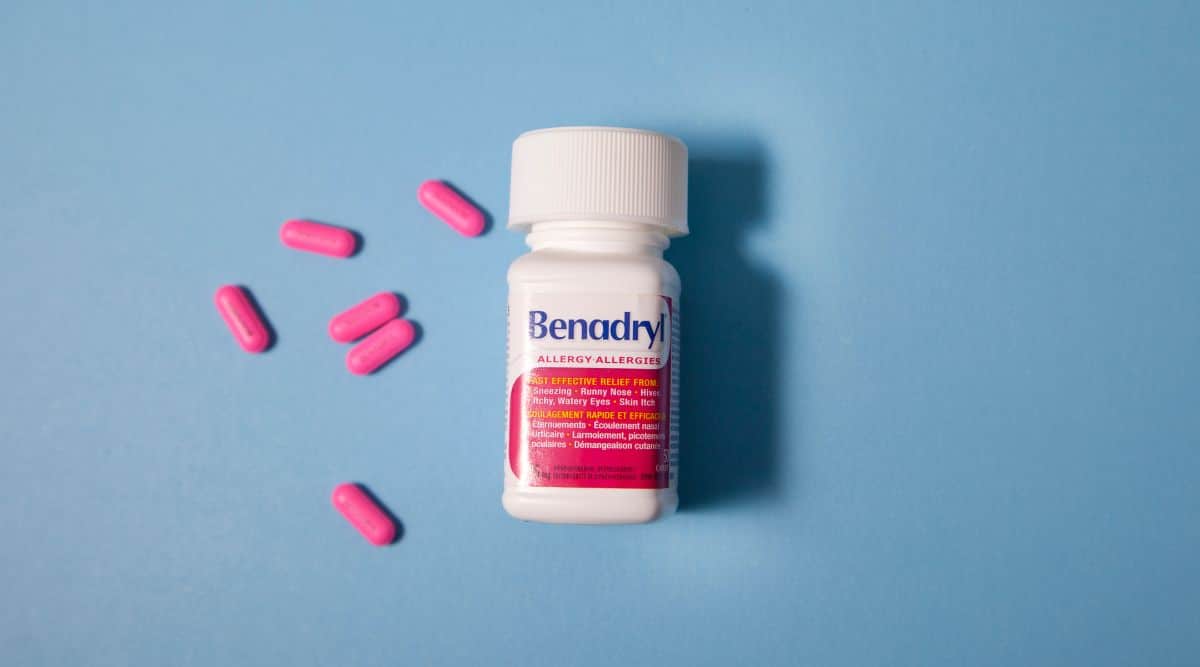
Frequently Asked Questions About Benadryl For Dogs
Do you have more questions about whether Benadryl is safe for dogs? Below are answers to the most common ones we hear from pet parents. If you don’t see your question listed, please drop it in the comments. We’re here to help!
Can I Give My Dog Benadryl Every Day?
You can, but you shouldn’t, unless your veterinarian has specifically approved it. Long-term use can reduce effectiveness and may mask more serious underlying issues.
Will Benadryl Make My Dog Sleepy?
Yes, most dogs experience drowsiness or sedation after taking Benadryl. This effect is especially noticeable with the first few doses. Over time, some dogs develop tolerance and become less sedated. A few may even become more hyperactive instead.
Can I Give Benadryl To Puppies?
Only under veterinary supervision. Puppies are more sensitive to medications and more likely to experience side effects like vomiting or lethargy. Always consult your vet before administering Benadryl to dogs under one year old.
Is Benadryl Better Than Zyrtec Or Claritin for Dogs?
Not necessarily. Benadryl works well for short-term relief, especially in emergencies like insect stings or hives. However, Zyrtec (cetirizine) and Claritin (loratadine) may be better tolerated and more effective for long-term allergy management. Your vet can help you choose the best fit.
Can I Use Benadryl-D Or Combination Medications?
No. Benadryl-D and other combination products often contain pseudoephedrine, acetaminophen, or alcohol, all of which are toxic to dogs. Only use plain diphenhydramine with no added ingredients.
How Fast Does Benadryl Work In Dogs?
Benadryl typically starts working within 30 minutes to an hour. For allergic reactions, like swelling or hives, effects can appear quickly. However, for chronic itching, it may take a few consistent doses to notice improvement.
Does Benadryl Help With Anxiety In Dogs?
In some cases, yes, the sedative effect can help dogs feel calmer during stressful events like fireworks or car rides. However, Benadryl is not a substitute for true anti-anxiety medications or behavior therapy for dogs with chronic anxiety.
What’s Next In Managing Your Dog’s Health
Benadryl can be a helpful tool, but it’s just one piece of the puzzle regarding managing your dog’s allergies and overall health. It’s worth exploring how your dog’s diet impacts inflammation. Some pups thrive on fresh food plans. Don’t forget the basics: staying hydrated with a clean, flowing water source (like a pet fountain) can support general wellness, skin health, and flush allergens. Considering pet insurance can also give you peace of mind when unexpected emergency vet visits occur. Your next step? Keep learning, your dog depends on it.
Have you ever used Benadryl for your dog? Whether it worked wonders or didn’t go as planned, we’d love to hear your story. Share your experience in the comments.
Why Trust Canine Journal
Michelle has been a lifelong dog owner, passionate about understanding what’s truly safe for our furry companions. From researching which human snacks are safe to managing more than a few upset tummies, she knows firsthand that what works for one dog may not work for another. She has used Benadryl for many of her dogs with guidance from her vet. Michelle is the co-founder and part of the Canine Journal team, where she helps pet parents make informed decisions backed by over a decade of collective experience. She’s also written extensively about dog-safe medications to help you navigate health concerns with confidence and care.
